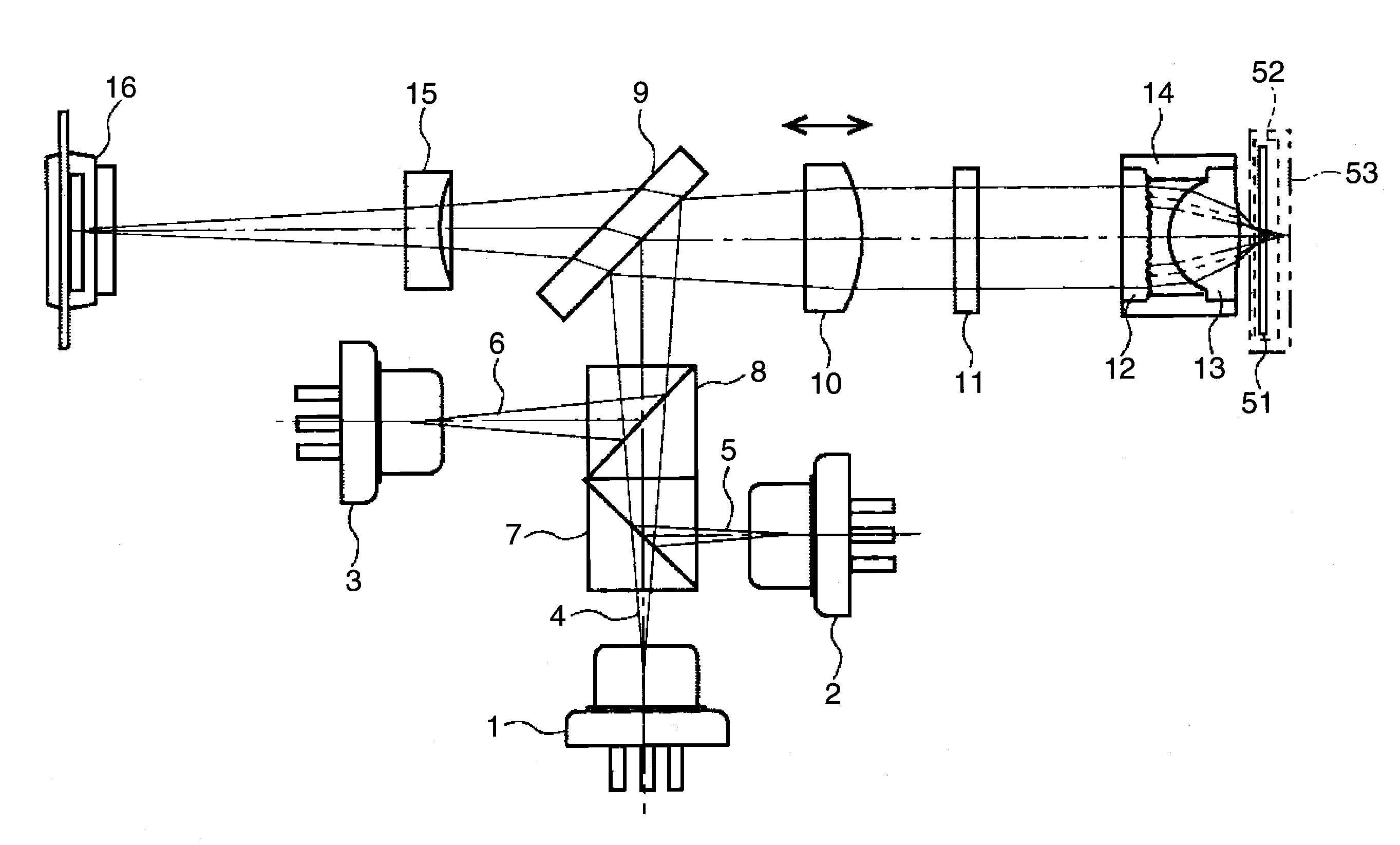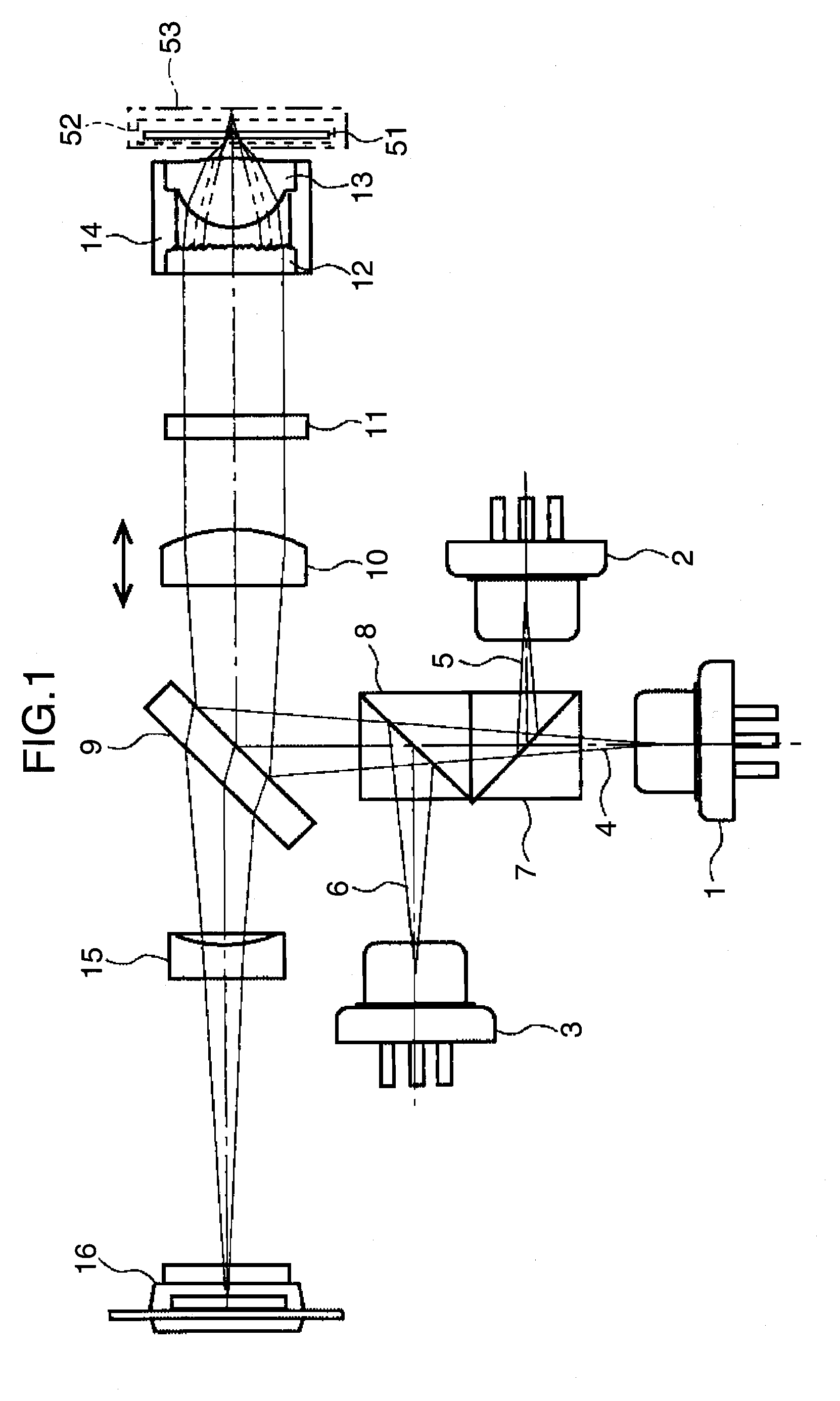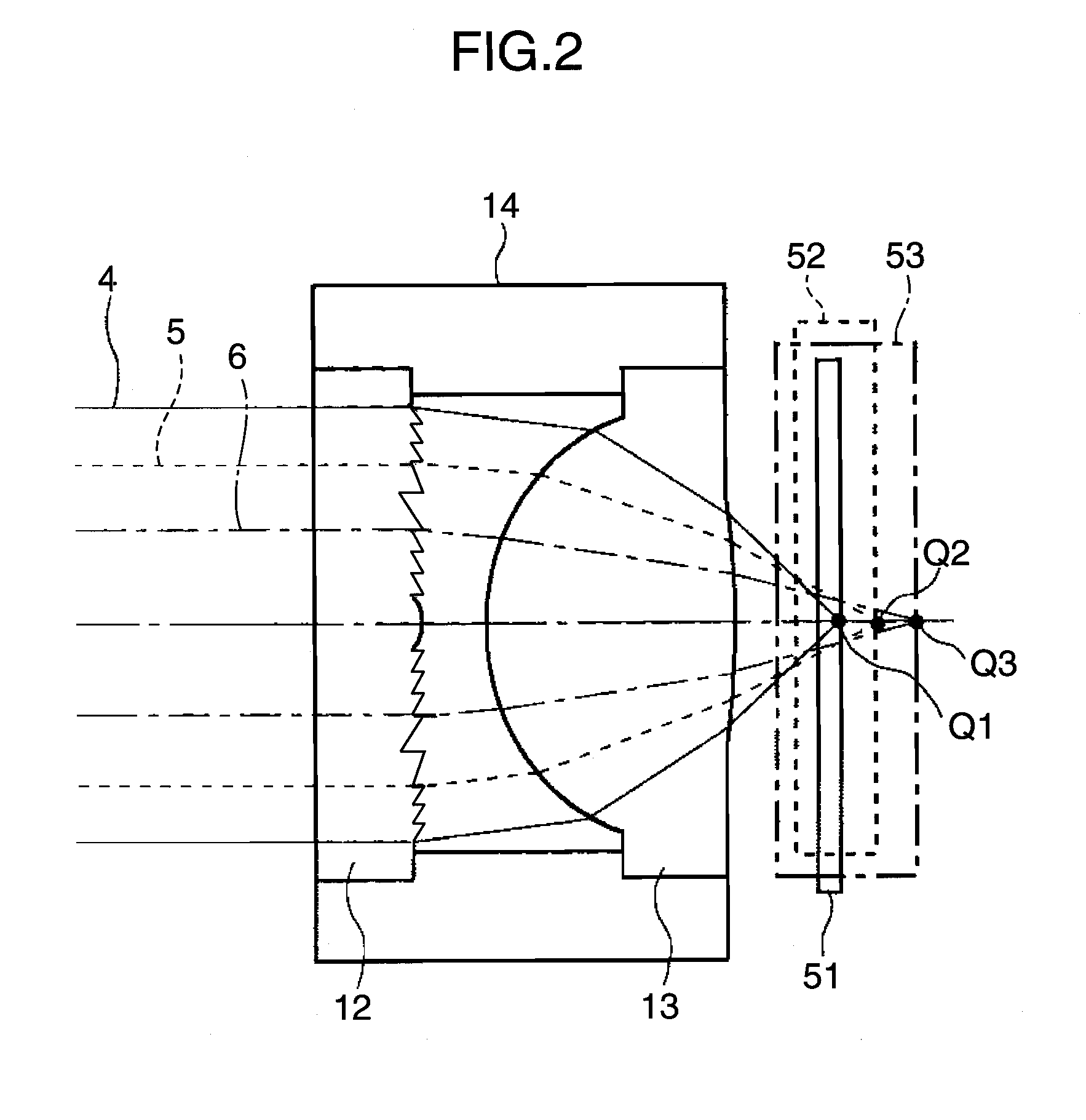Optical head and optical disc device
a technology of optical discs and optical heads, applied in the field of optical heads, can solve the problems of numerical apertures that cannot be set to 0.45, inability to record/play back information in/from cds, etc., and achieve stable compatible playback and compact and inexpensive effects
- Summary
- Abstract
- Description
- Claims
- Application Information
AI Technical Summary
Benefits of technology
Problems solved by technology
Method used
Image
Examples
first embodiment
[0056]FIG. 1 is a cross section showing the overall configuration of an optical head according to a first embodiment of the invention. Referring to FIG. 1, numeral 1 denotes a blue laser light source that emits light having a wavelength λ1 (almost 405 nm), numeral 2 denotes a red laser light source that emits light having a wavelength λ2 (almost 655 nm), and numeral 3 denotes an infrared light source that emits light having a wavelength λ3 (almost 780 nm). Numeral 10 denotes a collimator lens and numeral 14 denotes an objective lens. The objective lens 14 is formed of a diffraction element 12 and a refracting lens 13. Numeral 51 denotes an optical disc having a protective layer thickness t1 of about 0.1 mm, and it is an optical information medium in / from which information is recorded / played back with a light beam having the wavelength λ1 at a numerical aperture NA1, for example, an optical disc used as a BD. Numeral 52 denotes an optical disc having a protective layer thickness t2 o...
second embodiment
[0105]A second embodiment of the invention will now be described. In FIG. 2 used to describe the first embodiment above, the chromatic aberration, in particular, the wavelength dependence of the focal distance is cancelled out by providing the convex lens action to the diffraction element. However, because it is configured to correct the spherical aberration of optical discs each having a different protective layer by exploiting a difference of the wavelengths, the spherical aberration is generated when the wavelength varies from the design wavelength.
[0106]The configuration to correct this spherical aberration will be described using FIG. 8 and FIG. 9. FIG. 8 is an enlarged cross section showing an example of an objective lens according to the second embodiment of the invention. Referring to FIG. 8, an objective lens 143 of this embodiment is formed of a diffraction element 123 and a refracting lens 133, and has a configuration in which the refracting lens 13 of the first embodimen...
third embodiment
[0121]A third embodiment of the invention will now be described. FIG. 14 is a cross section showing the overall configuration of an optical head according to a third embodiment of the invention. Referring to FIG. 14, numeral 21 denotes a blue laser light source that emits light having a wavelength λ1 (almost 405 nm) and numeral 22 denotes a double-wavelength laser light source that emits light having a wavelength λ2 (almost 655 nm) and light having a wavelength λ3 (almost 780 nm). Numeral 28 denotes a diffraction lens that has both the diffracting action and the refracting action and acts as a convex lens. Numeral 30 denotes a collimator lens and numeral 34 denotes an objective lens. The objective lens 34 is formed of a diffraction element 32 and a refracting lens 33.
[0122]Numeral 54 denotes an optical disc having a protective layer thickness t1 of about 0.6 mm and it is an optical information medium in / from which information is recorded / played back with a light beam having the wave...
PUM
| Property | Measurement | Unit |
|---|---|---|
| thickness t3 | aaaaa | aaaaa |
| thickness t3 | aaaaa | aaaaa |
| thickness t3 | aaaaa | aaaaa |
Abstract
Description
Claims
Application Information
 Login to View More
Login to View More - R&D
- Intellectual Property
- Life Sciences
- Materials
- Tech Scout
- Unparalleled Data Quality
- Higher Quality Content
- 60% Fewer Hallucinations
Browse by: Latest US Patents, China's latest patents, Technical Efficacy Thesaurus, Application Domain, Technology Topic, Popular Technical Reports.
© 2025 PatSnap. All rights reserved.Legal|Privacy policy|Modern Slavery Act Transparency Statement|Sitemap|About US| Contact US: help@patsnap.com



